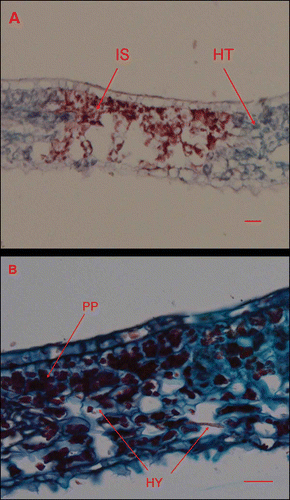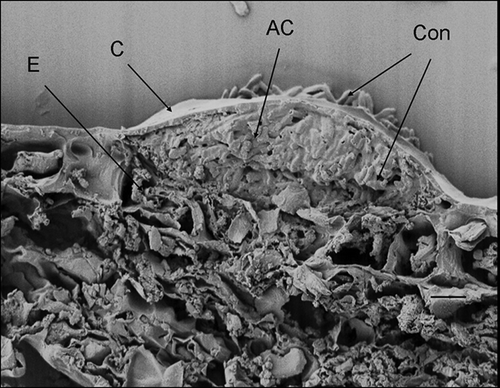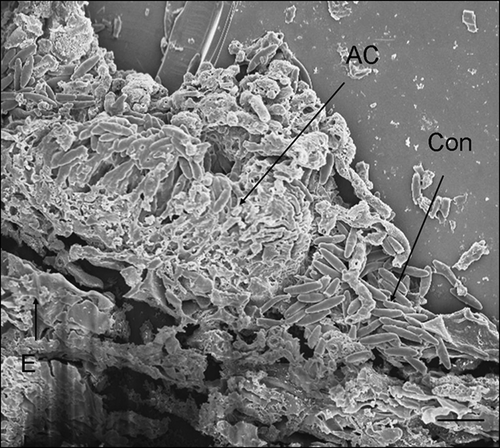Figures & data
Figure 1. Experimental wounding tool – a cork stopper embedded with #1 insect pins (16 pins/cm2) – used to abrade adaxial leaf surfaces.
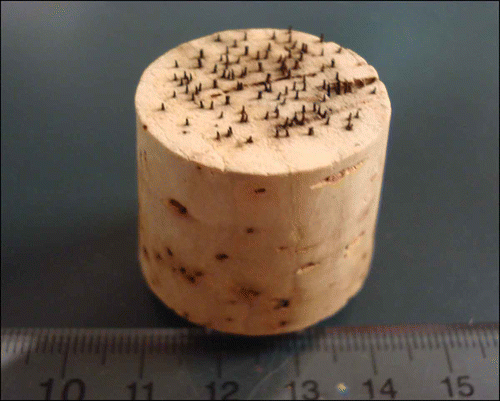
Figure 2. Scanning electron micrographs of Cornus florida ‘Cloud 9’ leaves with Discula destructiva conidia. A, Conidia (Con) begin to germinate on the leaf surface underneath the trichome (T) 1 day after inoculation (DAI). B, Germinated conidia with germ tube (GT) on leaf surface 2 DAI. C, Hypha (HY) growing from conidia 3 DAI. Bar = 2 μm.
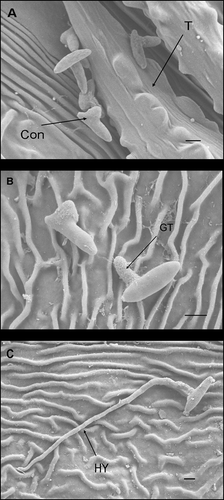
Figure 3. Histogram of conidial germination percentage at 1, 2 and 3 days after inoculation (DAI) on potato dextrose agar (PDA) and Cornus florida ‘Cloud 9’, respectively. Sample size n = 100 and bar = 1 SD.

Figure 4. Scanning electron micrograph of a Discula destructiva hypha (HY) directly penetrating through the Cornus florida ‘Cloud 9’ leaf cuticle (C) and cell wall (CW) into epidermal cells (E) at 3 DAI. Bar = 2 μm.
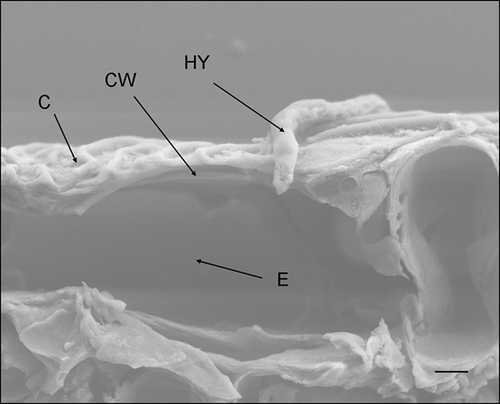
Figure 5. A, B, Light micrographs and scanning electron micrographs, respectively, of cross-sectioned Cornus florida ‘Cloud 9’ leaves inoculated with Discula destructiva conidia at 8 DAI. A, Hypha (HY) is growing intracellularly within epidermal cells (E). Bar = 10 μm. B, Hypha (HY) is growing in epidermal cells. Leaf orientation is adaxial surface up. Bar = 2 μm.
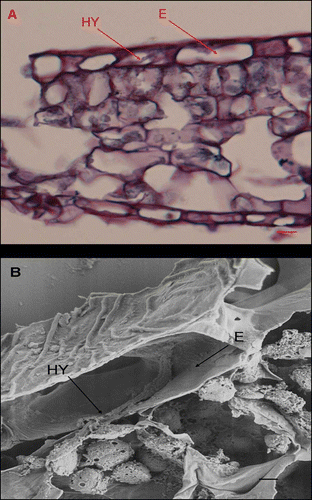
Figure 6. Light micrographs of Cornus florida ‘Cloud 9’ leaves inoculated with Discula destructiva conidia at 16 DAI. A, Diseased infection sites (IS) and healthy tissue (HT). B, Typically diseased, palisade parenchyma (PP) were stained dark red using safranin O. Bar = 20 μm.
